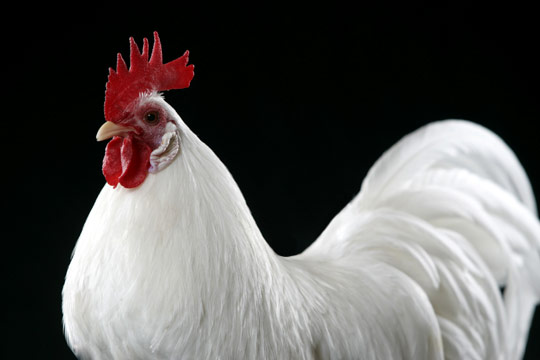A New Science Revamps Our Ideas About Domestication
Posted by Richard Conniff on March 25, 2014
My latest column for Takepart:
One of the most startling developments in recent science has been the realization that DNA and environment—or nature and nurture—do not by themselves tell the whole story. If we want to understand who we are and how we live, we need to look beyond genetics to epigenetics. That’s the science of how all the information coded in our DNA gets translated and expressed in our bodies and our behaviors.
And here’s the real stunner: This new science suggests that you can inherit the after-effects of things that happened to your grandparents and perhaps even your great-grandparents. That is, you can inherit their acquired traits: Did they experience high levels of prenatal stress? Were they neglected as children? Were they exposed to toxic chemicals? Did they smoke? The effects can show up in how their DNA—and yours—get expressed. By extension, the things we experience in our own lives may shape genetic expression in generations to come.
Epigenetics may also provide a new paradigm for understanding one of the central mysteries about the animals in our lives: domestication. A study in the journal Applied Animal Behaviour Science argues that epigenetics may offer better answers to old questions: Why do dogs have the most varied shape and size of any species on the planet? How did chickens adapt so quickly to living with humans? How do pigs raised in crowded industrial facilities handle the stress of their increasingly unnatural lives? And how can we recognize when stress is occurring and deal with it more intelligently?
If you remember high school biology, the idea of inheriting acquired traits might just make you say, “Hey, wait a minute.” You may even be recalling the French naturalist Jean-Baptiste Lamarck, best known as the author of the utterly discredited 19th-century idea that inheritance of acquired traits might be the driving force behind evolution. That notion fell out of favor as scientists instead came to accept evolution by natural selection—that is, evolution produced by the winnowing force of disease, predation, reproductive success, and other factors. Lamarckism became an object of ridicule.
Twentieth-century biology added the idea that DNA was the sole repository of all genetic information. And the dogma was that acquired traits could have no effect on DNA. But studies over the past 10 years have modified that idea. In experiments with rats, exposure to bug spray, jet fuel, BPA in plastics, and the agricultural fungicide vinclozolin (a potent disruptor of endocrine function) have all produced characteristic patterns of distortion in gene expression persisting over generations. Suddenly Lamarck doesn’t look so ridiculous anymore.
Discoveries about epigenetics caught the attention of Per Jensen, an evolutionary biologist at Sweden’s Linköping University and the author of the new study. His research focuses on how domestication of dogs, chickens, and other species has achieved such “stunning” variation in morphology, physiology, and behavior in just 10,000 years—especially when the genetic differences between domestic animals and their wild counterparts are often trivial.
Could epigenetics be the answer? In one study, Jensen took domestic white leghorn chickens and their wild ancestors, red junglefowl, and reared both on an unpredictable-light schedule. Because these birds don’t eat in the dark, that made it difficult for them to predict when to feed. The chronic stress also made them less adept at figuring out how to find food in a simple maze. The effects of that stress showed up in their brains postmortem. It also showed up epigenetically in future generations of white leghorns—but not in red junglefowl.
Jensen theorizes that humans may have unwittingly selected individual animals for domestication based in part on how prone they were to epigenetic effects—that is, based on their ability to respond to challenges more rapidly over generations, allowing them to adapt more quickly to the changing conditions of domestication. So far, that’s just an interesting theory. Jensen has yet to show epigenetic inheritance of beneficial or adaptive traits.
But the work on domestic animals has already attracted the interest of animal welfare groups because it suggests that epigenetics may soon provide a better way to tell if animals are experiencing stress. Right now, researchers wanting to understand stress generally measure levels of the stress hormone cortisol. But cortisol only reveals an animal’s stress levels over the past few hours. In the livestock industry, where that kind of testing often occurs at the slaughterhouse, that’s not terribly revealing. Instead, says Jensen, epigenetic testing could be available within the next five years to determine whether an animal experienced stress months earlier. That could make it easier to set standards for more humane practices in the livestock industry.
Epigenetics also raises troubling ethical questions, Jensen writes. For instance, stress may be bad for an animal in its own lifetime. But in some circumstances it might lead epigenetically to future generations that are better equipped to handle stress. Conversely, “protecting animals from stressful experiences could sometimes perhaps have more negative welfare consequences in the long run.” Jensen remains hopeful that it will be possible to shape animal welfare across the generations “by both positive and negative stimulation in different life phases, mediated by epigenetic mechanisms.”
For our domestic animals, the real bottom line may be that even stranger changes lie ahead, through the newly discovered power of epigenetics.






Leave a comment